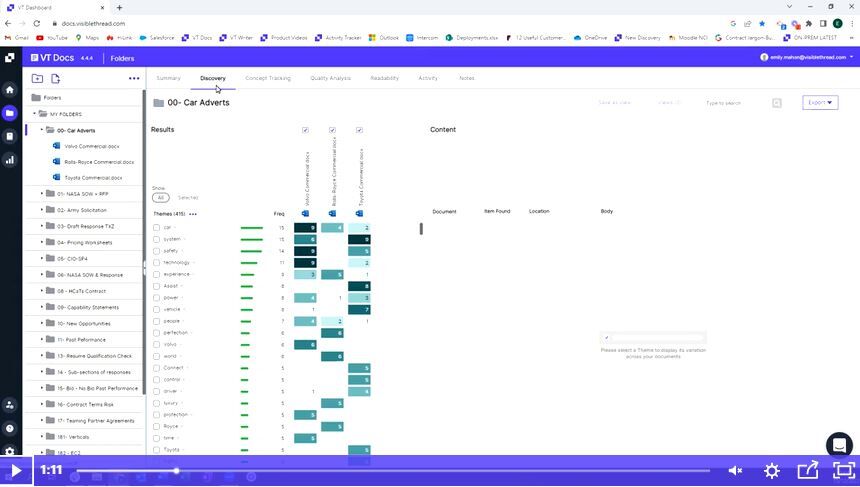Imagine a world where you could chat with your computer as easily as you would with another person. That’s exactly what Natural Language Processing (NLP) is all about. NLP is a fascinating field of computer science and artificial intelligence. It focuses on bridging the gap between humans and machines through the use of natural language.
NLP plays a crucial role in text analysis, as it provides the foundation for understanding and extracting insights from textual data. NLP techniques enable the processing, interpretation, and analysis of natural language in various forms, including written text, speech, and conversation.
NLP trains computers to understand, interpret, and even generate human language. Making communication between people and technology smoother and more intuitive. The process involves analyzing massive amounts of text and speech data to identify patterns and extract meaningful information. Much like a human would.
NLP is at the forefront of innovation. And let’s not forget about chatbots and virtual assistants. They use NLP to understand and respond to our queries in a natural, human-like manner.
So, next time you interact with technology, remember the exciting world of NLP and the amazing possibilities it brings!
What are the benefits of NLP?
One of the most exciting applications of NLP is in the development of conversational agents. These systems include chatbots and virtual assistants. They use NLP to understand the intent behind a user’s queries and generate appropriate responses that feel human-like.
Another important application of NLP is in the analysis of large volumes of text data. NLP algorithms identify patterns and structures in this data and extract meaning and context. This has many practical applications, such as sentiment analysis, topic modeling, named entity recognition, machine translation, and text summarization. Organizations can use all of these techniques to gain valuable insights from text data to better understand their customers.
Chat GPT is a good example of how artificial intelligence is making huge advancements in the world of NLP. We recently wrote a blog about how the proposal management industry is harnessing the power of Chat GPT.
NLP is a rapidly developing field that has the potential to transform the way we interact with technology. With continued advances in machine learning and computational resources, there is no doubt that we will see even more exciting developments in NLP in the years to come.
VisibleThread and NLP
Discovery is a game-changing feature for VT Docs users. With the power of AI, Discovery groups keywords together based on themes. This makes it easier to explore multiple documents and uncover any misalignments or potential risks. You no longer need to manually search through complex documentation sets. Discovery provides a clean overview of recurring and emerging themes all in one central view.
In this view, VT Docs lists the themes in the left panel. The middle panel shows you the frequency of each theme in your documents. The right-hand panel allows you to easily locate specific references within your documents, saving time for busy teams. With this overview, you can navigate the content associated with key terms that could impact your proposal or contract.
The use of rich data helps you identify and create search dictionaries. These dictionaries contain terms that are critical to the success of your proposal or the compliance of your contract. The streamlining of the dictionary creation process eliminates the tedious task of manually creating new dictionaries for each proposal.
Discovery has a variety of use cases, including:
- Bid/no-bid analysis for sales and capture teams
- Competitive analysis for sales teams to identify gaps and conduct win-loss analysis
- Requirements analysis for program and project managers to identify conflicting requirements and gaps
- Resumé analysis to identify credentials and capabilities across sets of resumés
- Past performance analysis for sales teams
- Consistency analysis for legal and contracts teams
- Alignment analysis for proposal teams to ensure they meet requirements.
With Discovery, teams can analyze complex documentation sets with ease and work smarter, not harder. Watch the video now to learn more!
NLP Examples
Many examples of Natural Language Processing (NLP) are in use today. Some of the most common applications of NLP include:
There are many software applications that use NLP technology. Some of the most popular ones include:
- Siri, Alexa, and Google Assistant. Voice-activated virtual assistants that use NLP to understand and respond to natural language commands.
- Computer programs. Designed to simulate conversation with human users through websites, messaging apps, and mobile apps.
- Machine Translation. Software that automatically translates text from one language to another, such as Google Translate.
- Sentiment Analysis. Software that analyzes customer feedback, social media posts, and other types of data to determine the sentiment expressed.
- Information Retrieval. Software that retrieves relevant information from a large database or the web in response to a user’s query.
- Question Answering. Software that uses NLP to understand and answer questions asked in natural language.
- Text-to-Speech and Speech-to-Text. Software that converts written text to spoken words and vice versa, such as Apple’s Siri and Amazon’s Alexa.
- Summarization. Software that summarizes long articles or reports into a shorter version, keeping the most important information intact.






